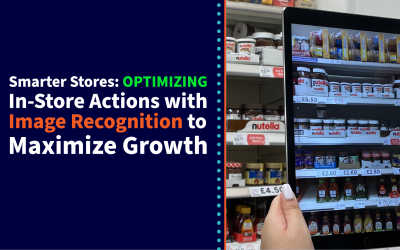EXECUTING A PERFECT STORE VISION POST-LOCKDOWN
Over the last four months, I have been reflecting on the dramatic changes that have impacted our personal and professional lives. During this period, the FMCG industry demonstrated great resilience in ensuring grocery retail stores were still able to sell all the essential items to enable consumers to survive lockdown. There were many examples of strong collaboration between retailers and their suppliers to ensure availability was maximised during a period of significant demand volatility. This forced brand owners and retailers to rationalize ranges with there now being 13,724¹ fewer product lines in the top six UK supermarkets than at the start of March 2020. All super categories were impacted, with Petcare suffering the largest reductions with an overall 27%¹ of the category SKUs delisted by the top six.
As lockdown starts to ease, the question for many brand owners is the rationalization of a temporary reduction or potentially the new normal. This situation has been further complicated by Tesco announcing a major recession war against discounters and requesting that suppliers adapt their pricing to reflect the new Every Day Low Pricing (EDLP) environment. Ultimately, the shopper will decide whether the priority is price or having a wider range of products to select from. Against this backdrop, investing in shopper research to understand changes in behavior to redefine a supplier’s perfect store picture of success will be important. Brand owners that can rapidly update their perfect store visions will be able to use these new insights to positively influence the category ranging debate.
Retailers will be unable to make significant changes to all categories at the same time and range changes will happen on a phased approach. During this period of transition, arming the field teams with clear guidance on the must stock lines is a priority. These should be based on national ranging agreements and perfect store outputs ensuring the right range is available at the point of purchase. Measuring progress in achieving your perfect store KPIs will identify individual stores with the optimum range. This will enable suppliers to build a business case for the success of their perfect store by analyzing Point of Sale (POS) data. There is no better time to revisit your perfect store in-store executional standards and leverage these across the head office and field teams to ensure you are winning in the market.
¹ Source: Assosia w/c 15 June 2020 vs w/c 2 March 2020
To learn more, download our white paper on Executing the Perfect Store Vision.
With 32 years’ experience, Andy Foweather is the Managing Director for StayinFront Retail Data Insight (RDI). Andy is an accomplished sales leader with expertise in delivering profitable sales growth through developing winning strategies and organizations.
Andy has operated at the Board Director level for over eleven years, leading substantive change in the UK and across European markets. He has been successful at influencing and driving alignment in matrix organizations and leading cross functional projects.

Follow his posts and activities on LinkedIn here:







